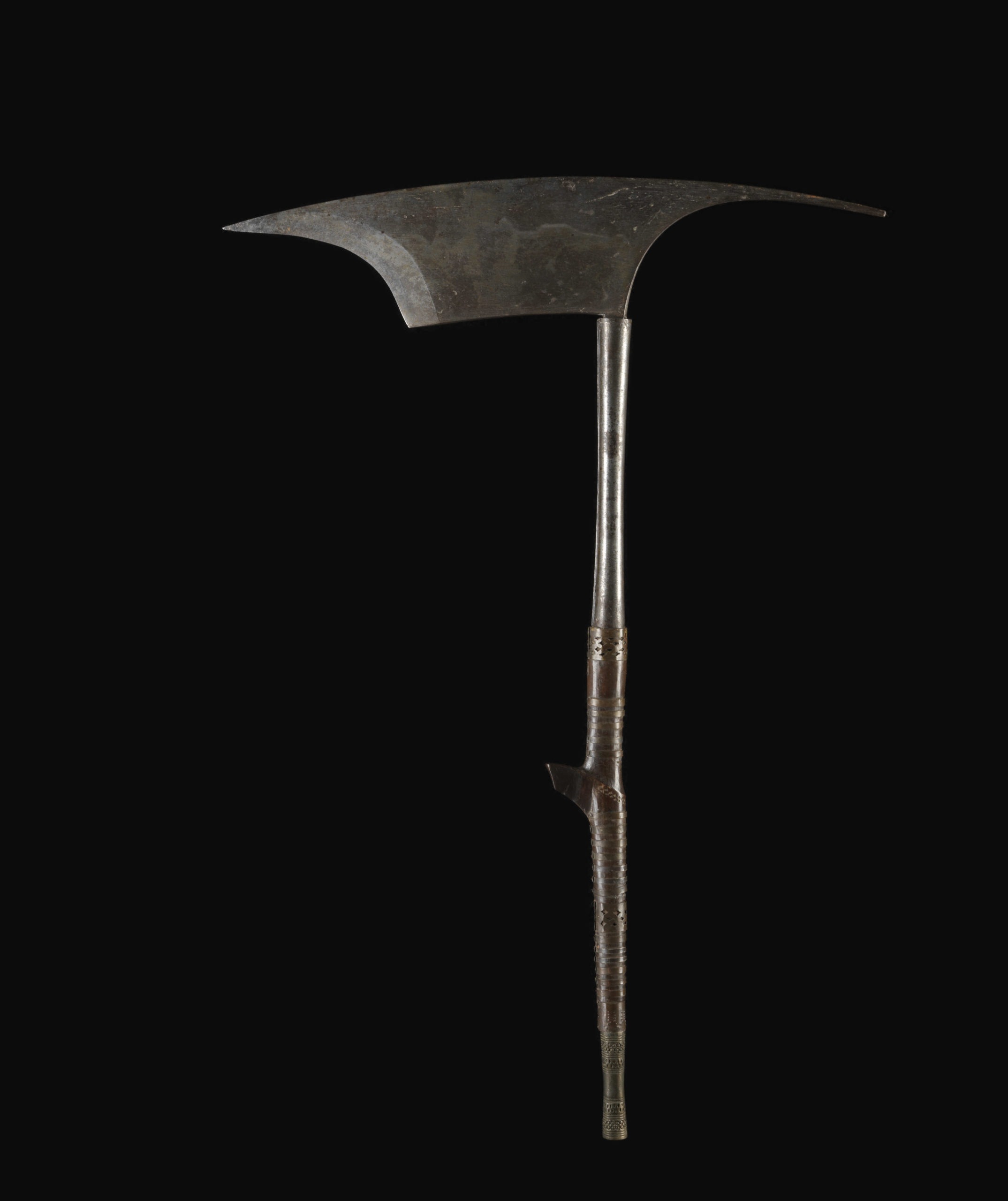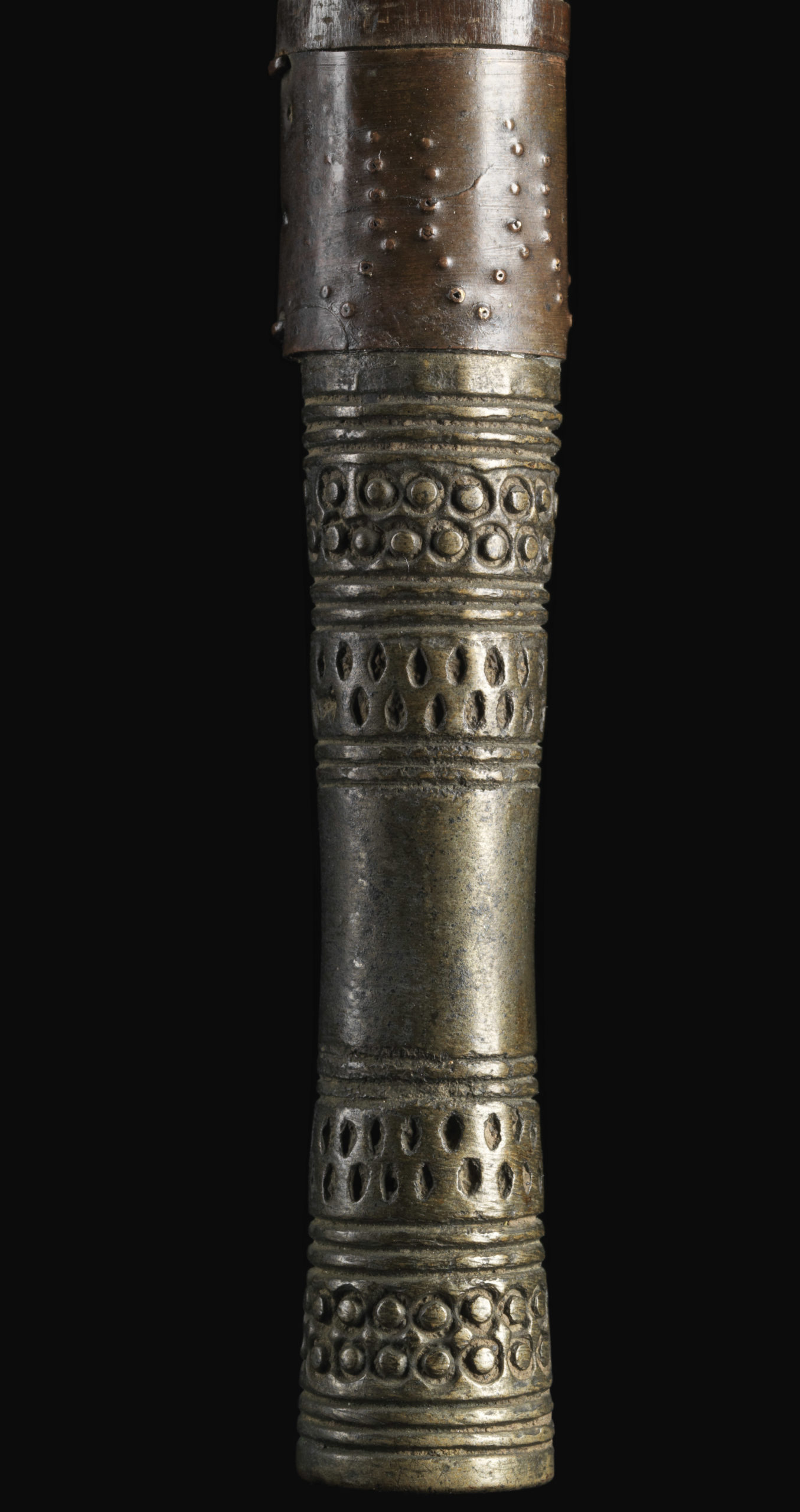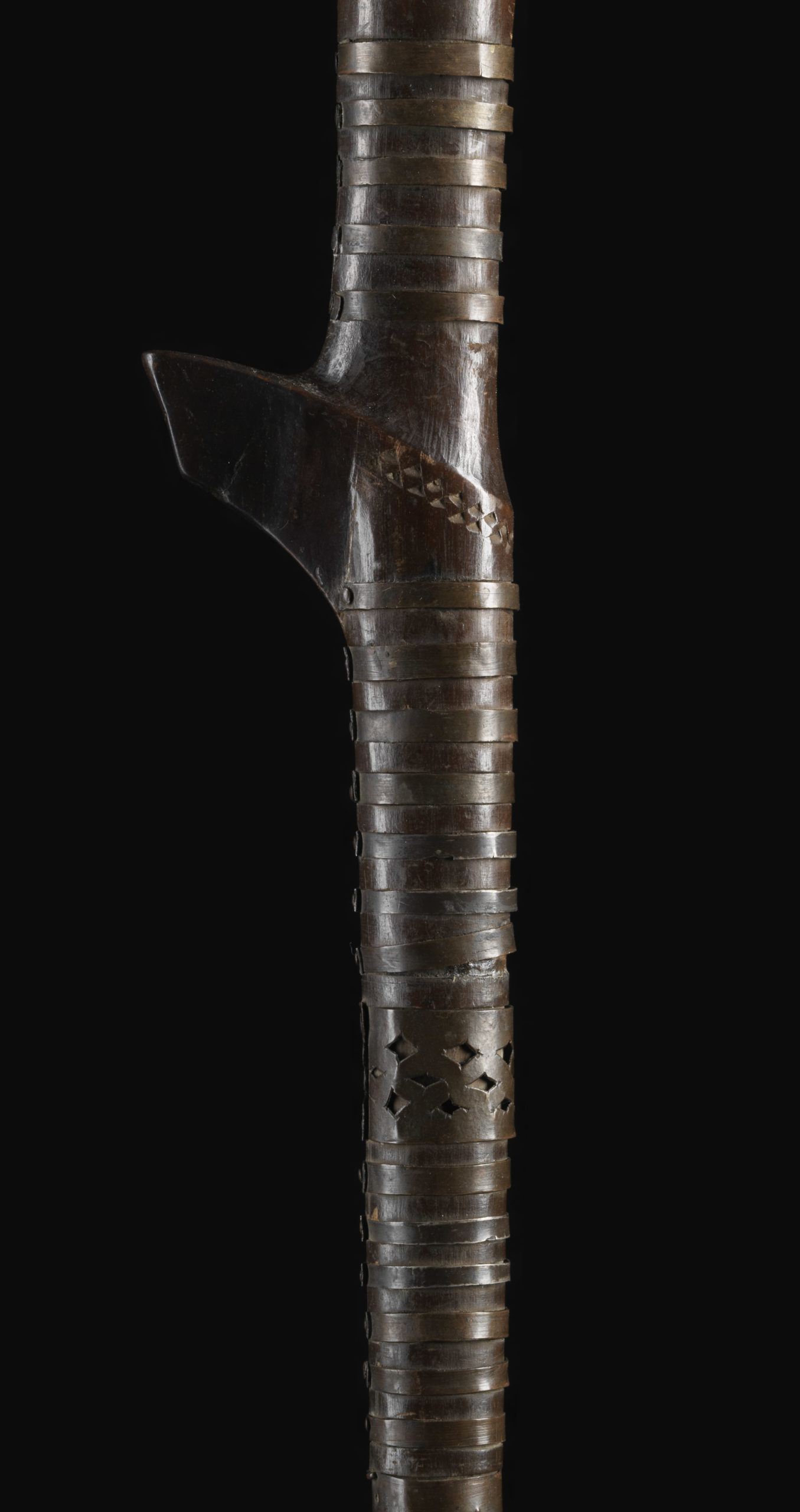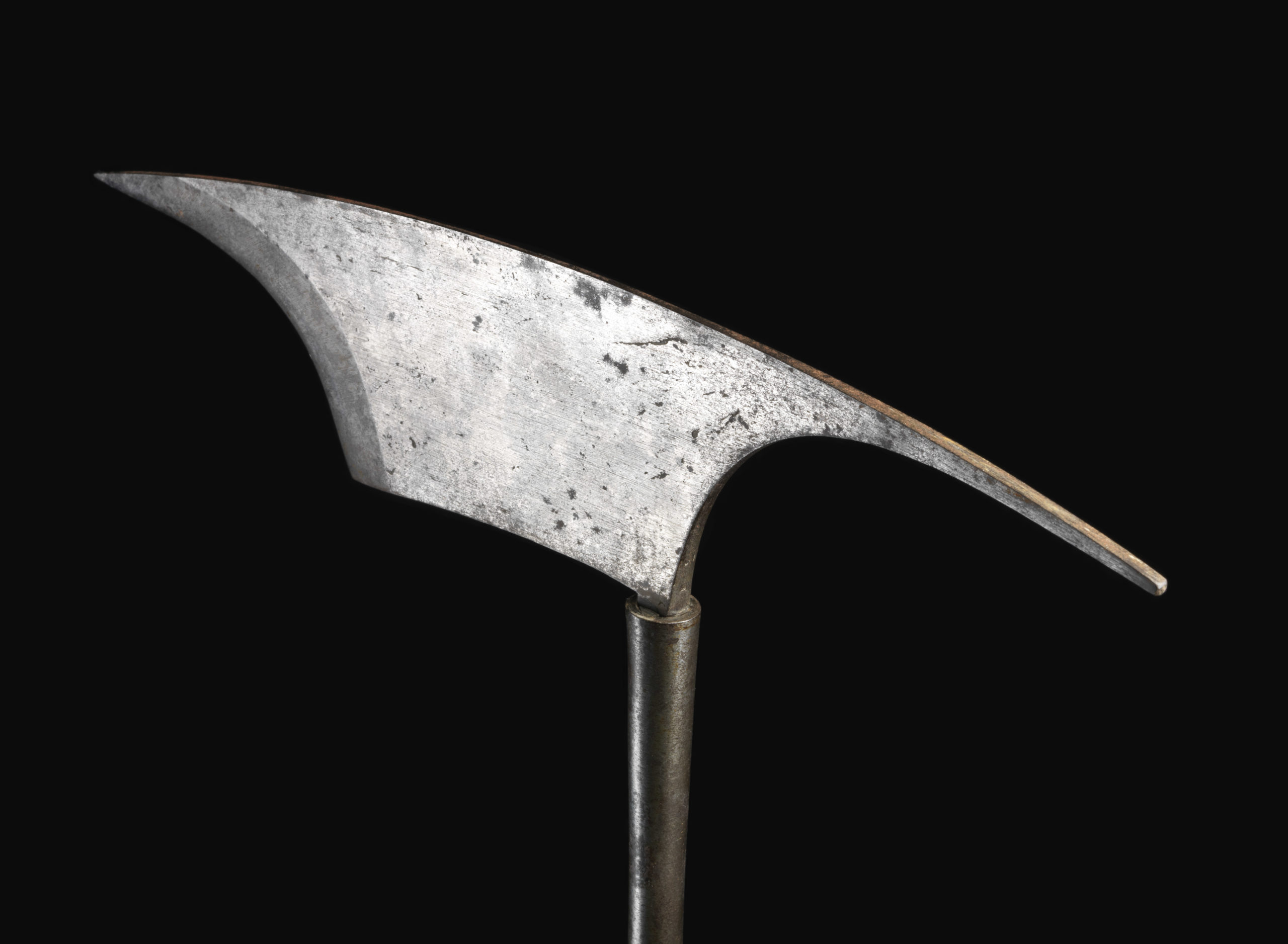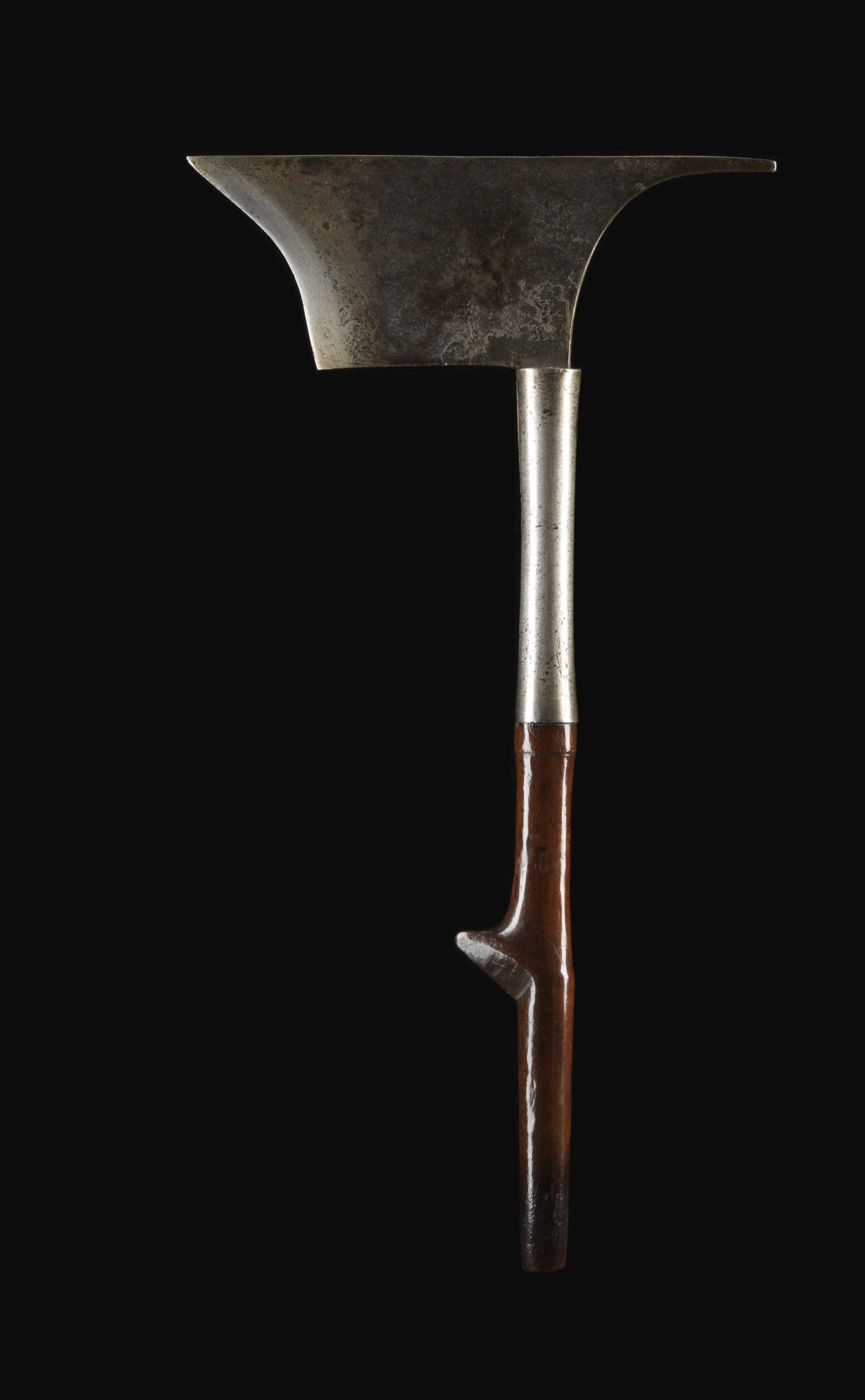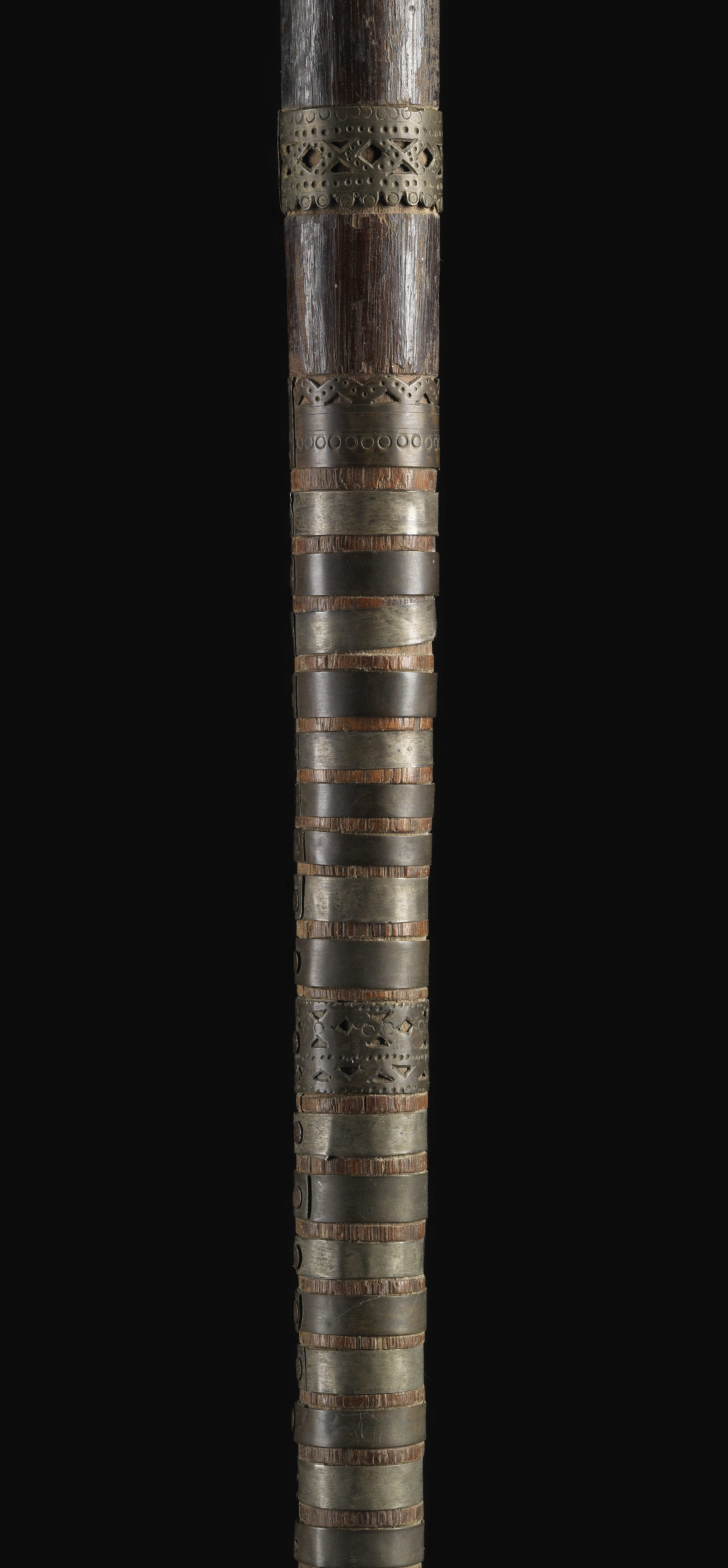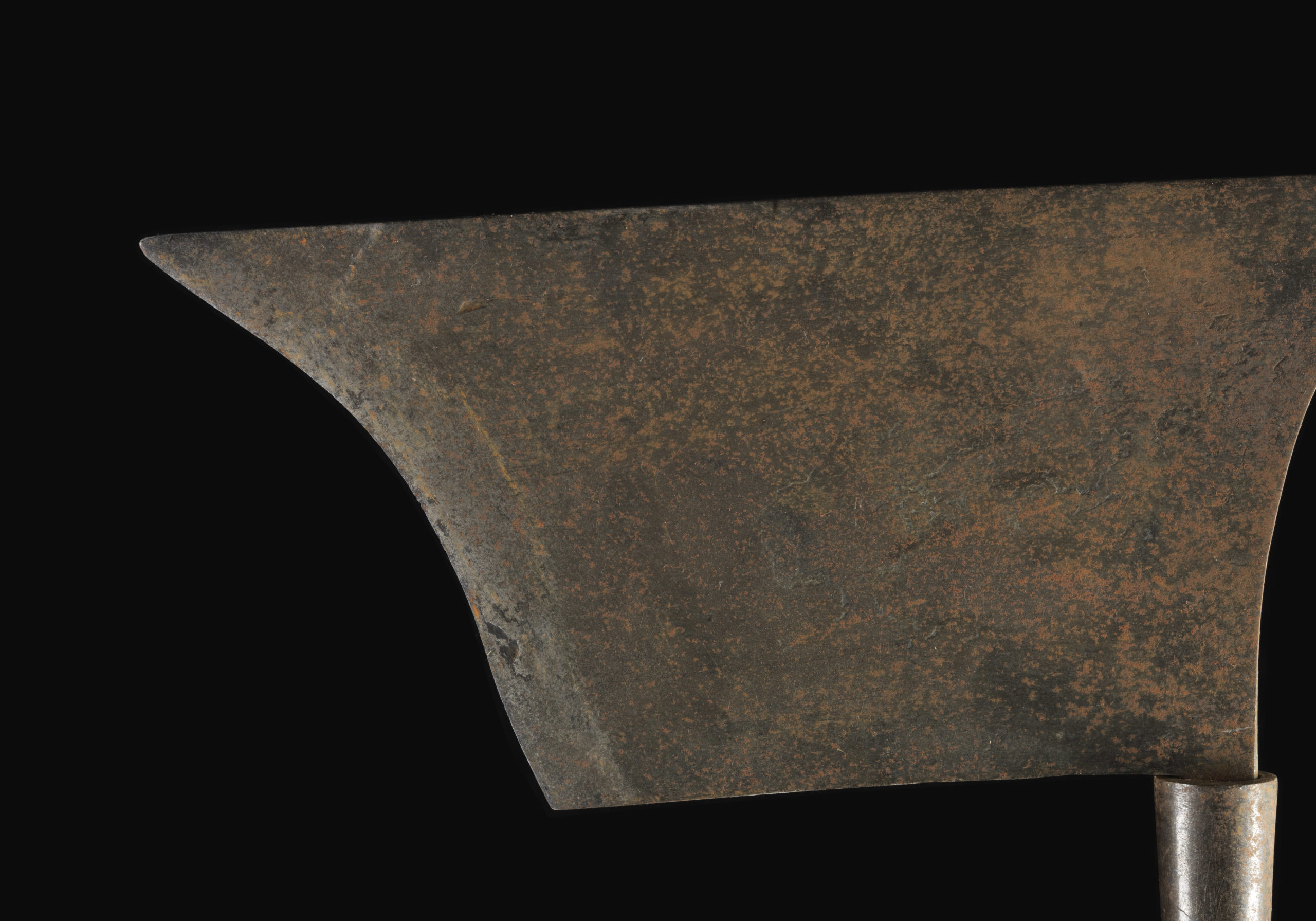Head axe “sinawit”
The sinawit is a battle axe of the Igorot groups in the mountain province of the Philippine Central Cordillera on the island of Luzon. This form of axe is endemic to Luzon and has a distinctive habitus. Nothing is known about its origin, but it can be assumed that it, like so many other blade forms of Southeast Asia, goes back to the ge– or ko halberd of the Zhou and Han periods. The concave edge and the extended thorn in the neck are reminiscent of Zhou-era Chinese pole weapons for infantry and chariot crews, which were put out of use in the army reform of the early Han period and the consequent abandonment of heavy chariots in favour of light cavalry, and were then negotiated on a grand scale in the outer provinces. There they inspired many subsequent forms, probably including, in the final analysis, the Indonesian kris, the dao of Myanmar’s and Assam’s Naga and various asymmetrical blades of the Korean and Japanese Bronze Age.
The Igorot use this axe as weapon and tool. However, Igorot (literally “mountain dweller”) is an imprecise term and a collective term for various ethnic groups, including Bontok (also Bontoc), Ibaloy, Ifugao, Isneg, Kalinga and Kankanaey (also Kananai), who all know this type of axe or hatchet. Hatchet would be the better term, as the axe is by definition a two-handed tool. This type of axe got its common name “Kalinga head axe” from the tribes practising head hunting, among them the Kalinga, who also produced and traded these blades themselves. These axes are still produced today in a less elaborate and martial form. Most of the co-production, for example the Bontoc-Igorot, was taken over by neighbouring groups. Among the southern Bontoc, besides the hatchets, the bolo hackers were also widespread. The axes have a smooth blade, which is concave or straight on the cutting edge. The upper side of the blade is slightly curved, the lower straight. Opposite the cutting edge it has a tapered spike, about the purpose of which there are various speculations. The mandrel should be able to be rammed into the ground, e.g. for use as an implement. Since the axe is now fixed, it is possible to cut various materials on the cutting edge, so it was postulated. However, the range of application of such a handling would be very limited. In any case, there are numerous such “interpretations” that can be considered exotic. One of them is the claim that the forked form of the Igorot shield is intended to pin enemies to the ground with their neck and to decapitate them with an axe. Technically this is absurd, because with the one-armed and freehanded shield you cannot “fix” a still defensible opponent, whereas this procedure is superfluous for an already defenceless opponent anyway.
There are two types of this axe. The axes of the northern ethnic groups have a concave blade, those of the southern groups are straight or convex. The strongly concave variant of the northern axes disqualifies the tool as a tool, while the often shorter southern axes are sometimes quite useful everyday tools. According to Albert E. Jenks (1905) there were two main villages in the Bontoc region at the beginning of the 20th century where these weapons were made. The northern axes were made in Balbelasan. They have a concave blade shape and a longer handle. The southern axes come from Baliwang; they have a shorter handle and a rather straight or slightly convex cutting edge. The generic term “cordillera axe” would be appropriate for this type of object, whereas the term “Kalinga axe” suggests that these axes are a speciality of the Kalinga, which is not clear. The Ifugao seem not to have used the axe in the past, but have adopted it. The axe lost its practical importance when it was banned by the American colonialists after the Spanish-American war. It is possible that the straight-edged form, as well as the increased use of the all-steel bolo knife as a utility tool, was increasingly promoted during this period, although the form with a concave cutting edge is certainly the original form. The short straight axes and the bolo (pika, pinahig) were allowed to be worn in public as indispensable everyday tools. In the 19th century the term aliwa seems to have been known for these axes, but this may also refer to a trading place for such objects, as “Damascus blade” refers to Damascus as a trading place and not to a type.
| Object | Axe / head axe “sinawit”, “gaman”, “aliwa” |
| Culture | Northern Philippines, Luzon, Bontoc or Kalinga |
| Time | 19th century /early 20th century |
| Dimensions | Length 39,50 cm – 82,50 cm |
| Material | Steel, wood, non-ferrous metal, lacquer |




